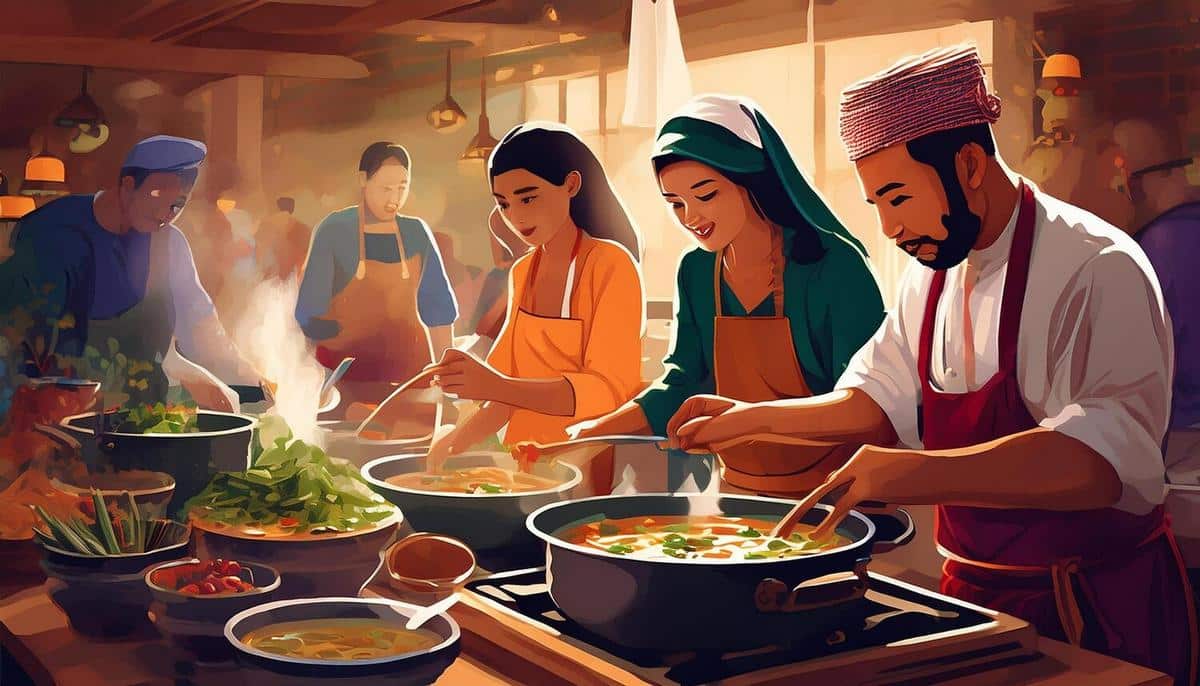
Traditional Indian Techniques for Home Cooks
Exploring the culinary landscape of India reveals a treasure trove of traditional cooking techniques that have been passed down through generations. These methods not only bring out the rich flavors and aromas inherent in Indian cuisine but also provide home cooks with tools to elevate their culinary creations.
Traditional Indian cooking techniques are as diverse as the country’s many regions, each with its own unique methods and ingredients. To truly appreciate these techniques, it’s essential to understand their cultural and historical significance.
Expert Insights on Indian Cooking Techniques
Renowned chef and culinary historian, K.T. Achaya, highlights how traditional Indian techniques such as tandoori and dum cooking have evolved over centuries, influenced by various cultures that have interacted with India. These methods are not just about cooking; they are about preserving flavors and enhancing nutritional value.
The unique blend of spices and slow-cooking methods are what give Indian cuisine its distinctive taste and aroma.” – K.T. Achaya
Popular Traditional Indian Techniques
- Tandoori: Cooking in a tandoor, a clay oven, imparts a smoky flavor and is perfect for meats and breads.
- Dum Cooking: Slow-cooking in a sealed pot, allowing ingredients to cook in their own juices, creating a rich and complex flavor profile.
- Bhaap: Steaming, often used for fish and vegetables to retain nutrients and flavors.
- Chulha: Traditional wood-fired stove cooking, which adds a unique taste and texture to dishes.
The Science Behind the Techniques
Studies indicate that methods like slow cooking and steaming help in retaining more nutrients compared to fast cooking methods. A study by the Journal of Food Science found that steaming vegetables preserved up to 50% more nutrients than boiling.
Personal Anecdotes and Examples
Growing up in a traditional Indian household, I recall my grandmother using a chulha to prepare meals. The earthy aroma and the flavors that the wood-fired stove imparted to the food are memories I cherish.
Actionable Tips for Home Cooks
- Invest in a small tandoor or use a grill to mimic the tandoori effect at home.
- Try dum cooking by sealing the pot with dough to trap steam and flavors.
- Use a bamboo steamer for authentic bhaap cooking.
Experiment with spices and herbs to enhance traditional cooking methods. Freshly ground spices release more flavor and aroma.
| Technique | Tools Needed | Common Dishes |
|---|---|---|
| Tandoori | Tandoor, Grill | Chicken Tandoori, Naan |
| Dum Cooking | Heavy Pot, Dough | Biryani, Dum Aloo |
| Bhaap (Steaming) | Steamer | Idli, Fish Curry |
| Chulha | Wood-fired Stove | Roti, Sabzi |
FAQs on Traditional Indian Cooking Techniques
What is the main benefit of using a tandoor?
Tandoors provide a high-temperature cooking environment that seals in juices and imparts a unique smoky flavor.
Is dum cooking suitable for vegetarian dishes?
Absolutely! Dum cooking enhances the flavors of vegetables and is perfect for dishes like Dum Aloo.
Conclusion
Traditional Indian cooking techniques offer a window into the rich culinary heritage of the country. By incorporating these methods into your cooking repertoire, you can not only create flavorful dishes but also connect with a tradition that values patience, flavor, and nutrition. So, why not try your hand at one of these techniques and experience the magic of Indian cuisine in your own kitchen?


